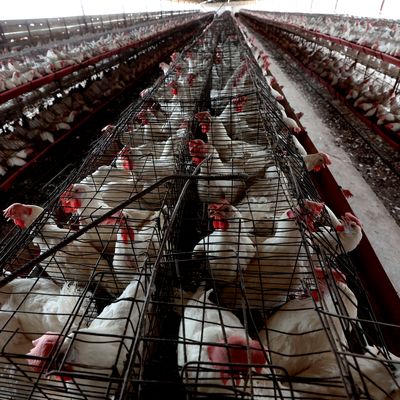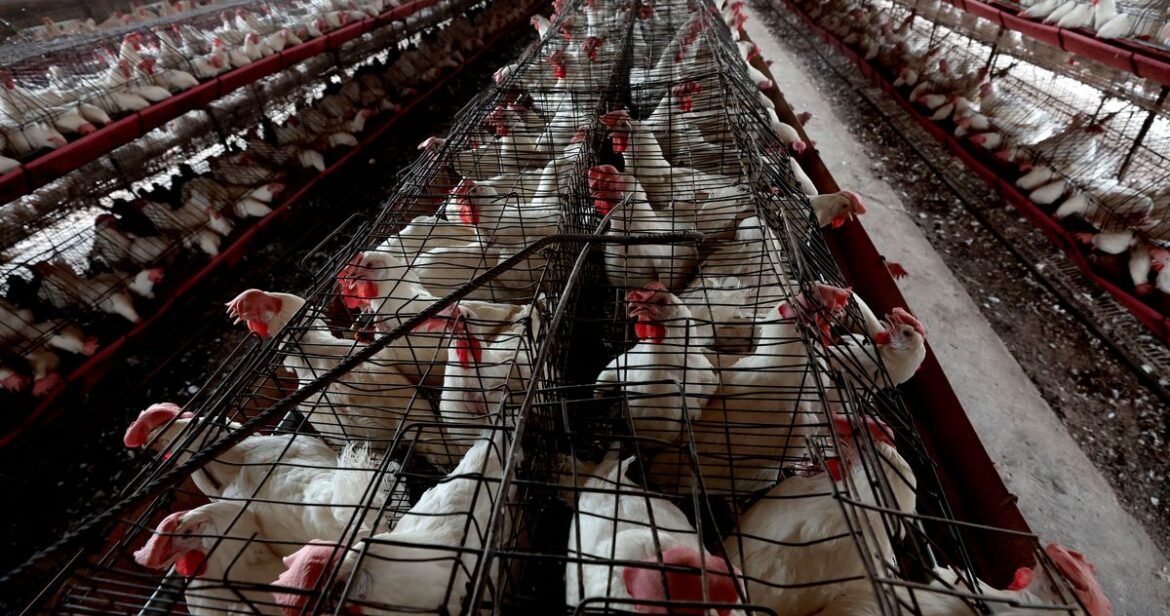
Photo: Ulises Ruiz/AFP/Getty Images
The day after Christmas, the Centers for Disease Control and Prevention announced that it had identified new mutations to the H5N1 bird-flu virus in a “severely ill” patient in Louisiana. Health workers who swabbed the patient’s throat found mutations that help H5N1 infect the upper respiratory tract, which could potentially make the virus spread more easily in humans. While the CDC noted that there is no evidence of person-to-person transmission in this case — or anywhere yet, thankfully — the mutations were similar to those found in a teenager who tested positive for the virus in Canada in November.
When the news broke, Dr. Angela Rasmussen, a virologist at the Vaccine and Infectious Disease Organization at the University of Saskatchewan, offered a measure of calm about the virus. “This doesn’t really change much in terms of estimating pandemic risk,” she wrote on X. To explain her thinking — and share what does scare her about the mutations — I asked her to expand on the latest development for the virus that is wreaking havoc in American dairy and poultry farms.
How concerned should we be about the H5N1 mutation in this person in Louisiana?
These mutations are actually not the most concerning part of the report to me. And that’s because they’ve been seen before, dating back almost 20 years, emerging in patients who’ve had severe H5N1. While they do potentially allow for the use of the so-called human receptor for seasonal influenza viruses, there’s no guarantee that these mutations would actually allow for that in the real world because they’ve never actually been associated with an increase in human-to-human transmission.
Also, some of this stuff in the report suggests, with fairly strong evidence, that this mutation arose in the patient throughout the course of their disease. So it was unlikely to be transmitted onto another person, and it’s not actually emerging in the birds that this person became infected by.
It’s obviously a concern when a virus has mutations that suggest it may be more capable of infecting and transmitting between people. But we have no actual evidence that that’s happening yet. There’s no evidence of onward transmission. And since these mutations aren’t appearing in nature and other animals that are predominantly the source for all the human infections so far, that bodes well in the sense that the virus itself isn’t acquiring new mutations and having them be maintained — which would make future spillovers more likely to result in human-to-human transmission.
So what is concerning about this case in Louisiana?
That we are seeing a huge increase in the number of human cases. These mutations are a good example of what happens when you have a human case. You start to see the virus begin to adapt to a human host. Even though this particular virus from this particular case isn’t a huge concern in terms of onward transmission, if we’re having human cases tick up and up and up, we’re going to give the virus more chances to develop mutations. And if that’s not detected and starts spreading in the human population, that’s a very good way to have a pandemic start out of this.
The other concern is the timing of all of these cases, which are ticking up right during flu season. If you get infected with two influenza viruses at the same time — so H5N1 and a seasonal influenza strain — a process can occur that’s called reassortment. That’s essentially like shuffling two decks of cards together, ending up making new viruses that have a combination of segments from both of the viruses that were infecting the person. That can lead to really, really rapid evolutionary jumps and rapid adaptation to a new host.
Most of the historical flu pandemics have been associated with reassortment. The current cattle outbreak is itself a recent reassortment between two different avian influenza strains. Some serology studies show that, at least with farm workers, there are cases going undetected. And if there are more human cases, that is giving the virus more opportunity to get experience with the human host and increasing the chance of reassortment because it’s seasonal-flu time of year.
I don’t know what it would take to turn H5N1 into a pandemic virus, and I don’t think anybody does. I can’t say when or if it will happen. I mean, it’s something that could happen tomorrow, and it’s something that could never happen. But the chances of it happening are continuing to increase, and that’s what gives me cause for a lot of concern.
How can we decrease the risk of creating a pandemic strain?
I think a lot of people aren’t completely aware that there is a risk, but the general public probably doesn’t have a ton of stuff to worry about. In that sense, the advice would be don’t handle dead or sick birds or animals, which is common-sense advice.
People who have backyard chickens would potentially need to wear PPE. They need to call their health department or their vet right away if they start to see animals getting sick and dying off. But they should definitely protect themselves with eye protection, respirator gloves, and making sure that they’re washing their hands. Farm workers should be given eye protection at the very least and educated again about the risk in poultry operations or egg operations. They need to have respiratory protection, potentially Tyvek, and definitely eye protection. The one last thing that everybody should be doing anyways — because it’s a good idea for just health — is getting seasonal influenza vaccinations because that will reduce the risk of reassortment.
Why hasn’t the government used its small stockpile of H5N1 vaccines to help protect farm workers?
I’ve been very frustrated by the lack of trigger criteria for offering these vaccines to farm workers in poultry and dairy operations that are at extremely high risk of exposure. They haven’t really stated what the trigger would be. How many human cases would we have to trigger a decision to release some of those vaccine doses? What would the distribution approach be? How would people be identified based on their risk profile, that sort of thing. And I think that the reason we haven’t had a lot of transparency on that is that there’s been a lot of industry concerns about too much, I guess, overreach and about the effects that it’s potentially having on production, especially in the dairy industry. So the U.S. Department of Agriculture has been fairly slow to act, in my opinion, on trying to even figure out the full scale and scope. That fortunately has changed, and the USDA, right before Christmas, implemented a mandatory testing regimen for milk.
There are about 5 million doses that are ready to go in the stockpile that are thought to at least be a pretty good match for the cattle genotype. But it doesn’t appear that right now, anyway, the CDC is going to be recommending that.
As a virologist, do you think this feels like a slow-motion disaster unfurling?
It feels like a slow-motion disaster. The cattle outbreak has spread far and wide. We still don’t know how many cows and herds are affected. There are some states where there’s been almost no testing, so we may well see new states popping up on that positive map. There’s no way that you can contain an outbreak if you don’t know the full scale and scope of that outbreak.
Adding to the problem, there are multiple genotypes of the virus circulating. The case in Louisiana was associated with birds, which is different from the cattle virus. It’s not that big of a distinction to the general public, but what that means is that there are essentially multiple sources of this virus. So you could get it from cows, but you could also get it from birds. You could get it from domestic birds, or you could get it from wild birds. In fact, that’s how a lot of the domestic poultry operations are getting infected, because wild birds fly in there and the next thing you know, you’re having to cull a flock. So there’s a lot of the virus around just in nature. It’s also now getting into wild mammals, including ones that live in close proximity to people, like skunks and foxes and raccoons. It’s also getting into pets. It just feels like there are so many different pathways for this to go terribly wrong.

